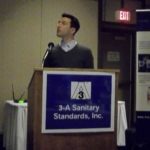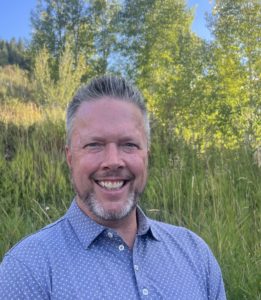 August 1, 2023
August 1, 2023
E.A. Bonelli + Associates, Inc., is pleased to announce the latest addition to the firm. Jamie Horton joins the EAB team as Principal Engineer, Mechanical and Refrigeration.
Mr. Horton brings over two decades of experience in Mechanical and Refrigeration design for the food and beverage industries, including more than thirteen years as a managing partner of EMR, an engineering and construction firm that provided mechanical utility systems to clients in this sector. More recently, Jamie served as Mead & Hunt's Vice President, Food & Beverage Market Leader. It was in this role that Jamie began his collaboration with EAB, working on the expansion of a dairy processing facility in Roswell, NM, and continuing into several projects up until his retirement from that firm in 2022.
Jamie has always been drawn to the specialized, highly technical nature of mechanical utility design for food & beverage. The prospect of returning to more challenging projects and designing large-scale systems, while working within the close-knit environment of E.A. Bonelli, was instrumental in his decison to join the firm.
I have a great appreciation for the small-company culture that combines with large-company performance. There is a nimbleness to EAB that I greatly admire; an ability and a desire to do whatever it takes to address clients' projects and issues.
In his role as Principal Engineer for the Mechanical and Refrigeration disciplines, Jamie is poised to lead the development of EAB's design division.
One of my primary goals, and the part of this job for which I am most excited, is to strengthen our Mechanical group. Our intention is to continue growing this team of engineers in order to address, more effectively, the needs of our customers. EAB has always excelled at designing hygienic, high-performing facilities that safeguard our clients' processes. But we also want to be able to provide the kind of services that keep these plants' utility systems performing optimally.
Additionally, Jamie brings his accomplished business acumen to EAB's Leadership team, and will be working with partners and associates to grow and develop the firm's business strategy. EAB is privileged to have Jamie's leadership and expertise driving these latest stages of company growth.
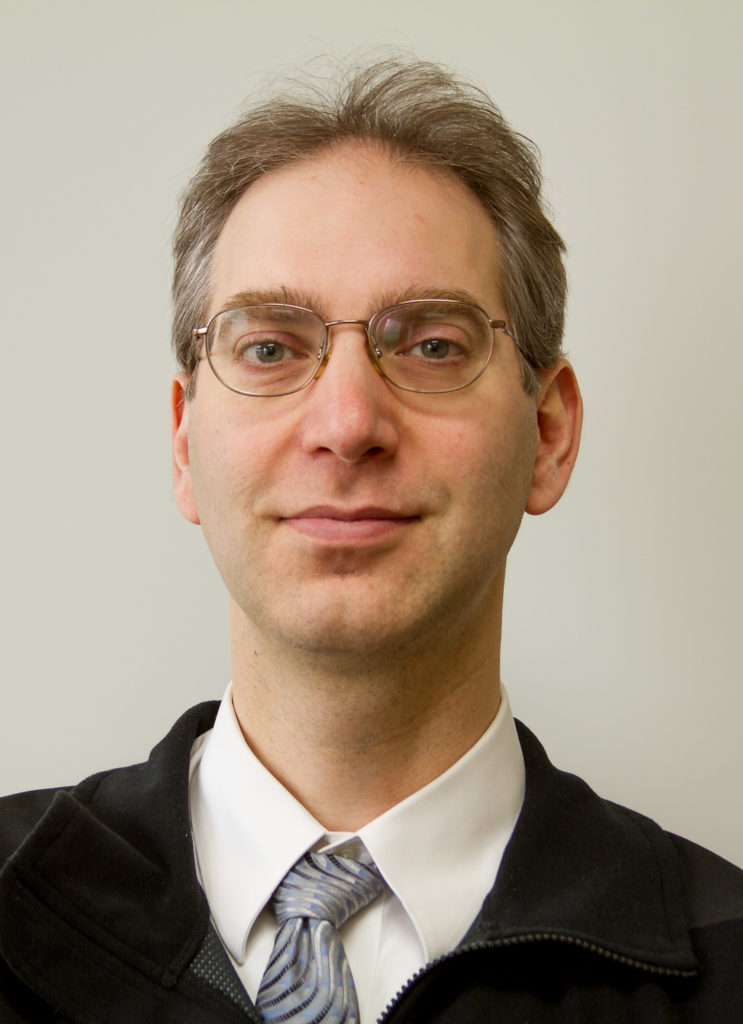 January 11, 2021
January 11, 2021
E.A. Bonelli + Associates, Inc., is pleased to announce the latest addition to the firm. Omar M. Shaaban, P.E., joins the EAB team as the new Director of Electrical Engineering.
Mr. Shaaban brings nearly three decades of experience as an electrical engineer to EAB, bolstering the burgeoning MEP Division, and leading electrical design from the new Portland office.
Joining an all-company video conference on January 7, Omar was welcomed by his new coworkers and expressed his enthusiasm for working for EAB:
I am proud to be part of this exciting new phase of E.A. Bonelli's growth. The way in which we are assembling this MEP design division affords us the wonderful opportunity to do it correctly, with intention, and informed by a wealth of experience serving the food & beverage industry. - Omar Shaaban, P.E., Dir. Electrical Engineering
For many on the call, this was not an introduction, but the return of a familiar face. Mr. Shaaban has worked with E.A. Bonelli on projects dating back almost two decades, including the original design of the Davisco (Agropur) facility in Lake Norden, SD, and the Leprino Foods facility in Lemoore, CA. As an electrical engineer for Cundiff Engineering Inc., and then Interface Engineering, Omar was a valued member of various design teams, exemplifying the kind of collaborative mindset that is so vital to project success.
Omar has what I consider the EAB approach to design and engineering. Since I first worked with him, I've been impressed with the way he talks through ideas and isn't afraid to challenge and be challenged in return. Omar is the ideal person to lead our new electrical design division and we are excited about the company growth that his hiring represents. - Scott Savage, CEO & Managing Principal
In 1992, after earning his Bachelor of Engineering in Electrical and Electronics Engineering at Oregon State University, Mr. Shaaban started working for Cundiff, and earned his professional electrical engineer licensure (P.E.) in the state of Oregon. He became an associate at the firm in 2011. In 2017, Mr. Shabaan joined Interface as a senior electrical engineer and associate.
Omar's passion for engineering can be traced back to childhood. His father, a mechanical engineer, helped instill the importance of education and a strong work ethic. An early aptitude in mathematics opened doors to high school classes in electronics and technical skills. As his education continued into college, Omar developed a deeper appreciation for the connection between occupational skills, so often demonstrated in his father's career, and the theoretical knowledge presented in his curriculum.
His wealth of experience in electrical engineering for industrial facilities, coupled with an established level of trust with many of EAB's existing customers, will allow Omar to immediately step into the role of providing the highest level of service for EAB's clients in the food and beverage industry. Furthermore, Omar's dedication to learning and education provides the opportunity to mentor a new generation of engineers. He is eager to share experiences, best practices, and lessons learned as part of his new role at EAB.
I am happy to be working with so many familiar faces, and it is gratifying to see how E.A. Bonelli has maintained working relationships with so many of the clients I worked with in the past, when I was a design team member. I am eager to bring my passion for electrical engineering design for food & beverage to bear for our clients, and support projects from planning through construction. - Omar Shaaban, P.E., Dir. Electrical Engineering
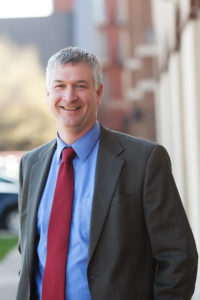 October 5, 2020
October 5, 2020
E.A. Bonelli + Associates, Inc. is very pleased to announce the newest addition to the partnership group.
Brad Heeres, P.E., brings his decades of experience in food & beverage facility design and engineering to the EAB team. As the new Vice President of Engineering, Eastern Region, Mr. Heeres will not only guide the development of EAB's expanded design department, but will also serve to broaden the company's geographical reach in North America by opening its first Michigan office.
In an all-company video conference on October 1, Brad spoke to his new coworkers about his role and expressed his enthusiasm for joining the EAB team.
I share EAB's passion for excellent design for food & beverage facilities. I'm excited to join this team and bring my experience and commitment to what is an already outstanding firm. I look forward to amplifying EAB's success, and together with you, grow the company.
Brad, of course, is no stranger to this group. Brad has been a design partner with E.A. Bonelli since 2009, and has been a valued collaborator in joint marketing efforts, customer outreach and support, and project delivery. He has likewise earned the respect of EAB's client base, with a recognized level of expertise that extends beyond his role as a project manager for utility design disciplines. Brad's client-focused philosophy and proactive approach to design and planning has been an invaluable asset on major project partnerships for over a decade.
In 1994, after earning his M.S. in electrical engineering at the University of Wisconsin-Madison, Mr. Heeres started the electrical engineering department at Angus-Young Associates, an Architecture and Engineering firm in Janesville, WI.
In addition to his electrical engineering responsibilities, he quickly assumed responsibilities in HVAC and mechanical engineering, as well as leading engineering projects with companies like General Motors and Frito Lay. Mr. Heeres became the Director of Engineering of Angus-Young.
In 2007 Mr. Heeres joined GMB Architecture + Engineering as a leader in the engineering department. As a Vice President of the firm, Mr. Heeres completed a wide range of projects in the food processing sector, including work on several dryer facilities. His project role was to lead complex and fast-track engineering projects including pre-planning and feasibility studies through design and project implementation.
Mr. Heeres is a registered Professional Engineer throughout the United States. He is a LEED Accredited Professional (AP) and is a member of the National Council of Examiners for Engineering and Surveying (NCEES).
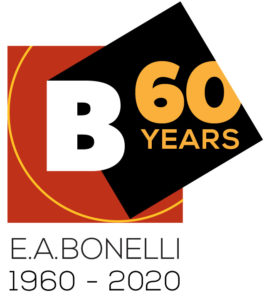 Brad's passion for industrial engineering began early in his professional career, and has now led him to a position to strengthen EAB's presence as a leading facility designer for the food & beverage industries. Brad will spearhead the development of EAB's MEP design department, and help guide the company's growth as EAB formally transitions to a full-service design and engineering firm.
Brad's passion for industrial engineering began early in his professional career, and has now led him to a position to strengthen EAB's presence as a leading facility designer for the food & beverage industries. Brad will spearhead the development of EAB's MEP design department, and help guide the company's growth as EAB formally transitions to a full-service design and engineering firm.
On the heels of celebrating its 60th year in business, EAB is proud to look forward to continued growth. Broadening in-house services had always been an objective, but never one that was taken lightly. At the right time, and with the right people, EAB was preparing to realize that goal. Brad Heeres is the right person to lead this next stage of EAB's evolution.
Brad was involved in the leadership at both Angus-Young and GMB. His experience with business development, talent attraction, and strategic planning make him very well-positioned to lead the development of our expanded design department.
- Scott Savage, CEO and Managing Principal
Mr. Heeres's interdisciplinary approach to utility engineering, drawing on expertise in not just electrical but mechanical and HVAC engineering as well, is part of what makes him the perfect choice to lead this initiative. His wealth of experience designing and managing projects in the F&B sector, combined with his team-centric attitude, assures an elevated level of service to EAB's customer base and serves to emphasize this company's commitment to unparalleled excellence in the design and engineering of production facilities for the food and beverage industries.
 In more than sixty years of facility planning and design for the food & beverage industries, E.A. Bonelli has prided itself on positioning itself at the forefront of industrial architecture and engineering. More significantly, however, has been the way this firm has leveraged its expertise and ingenuity towards advancing the latest processing innovations and consumer trends. One of the fastest growing segments of food & beverage processing is the development and production of legal cannabis edibles and beverages.
In more than sixty years of facility planning and design for the food & beverage industries, E.A. Bonelli has prided itself on positioning itself at the forefront of industrial architecture and engineering. More significantly, however, has been the way this firm has leveraged its expertise and ingenuity towards advancing the latest processing innovations and consumer trends. One of the fastest growing segments of food & beverage processing is the development and production of legal cannabis edibles and beverages.
This year, Prepared Foods is hosting the first ever Cannabis Products Exchange. CPX20 is a virtual and interactive conference designed to inform and inspire the ideation, innovation, research and development, manufacturing, packaging, distribution, and consumer safety of legal cannabis edibles and beverages.
In partnership with The Vivid Team, E.A. Bonelli is proud to be sponsoring this year's event. On Thursday, July 30, EAB and Vivid will discuss how this partnership can provide turnkey solutions for the emerging cannabis food & beverage industry.
The EAB/Vivid Team is comprised of best-in-class business leaders in food science, product development, project management, facility design and construction, helping to navigate product ideas from concept to realization.
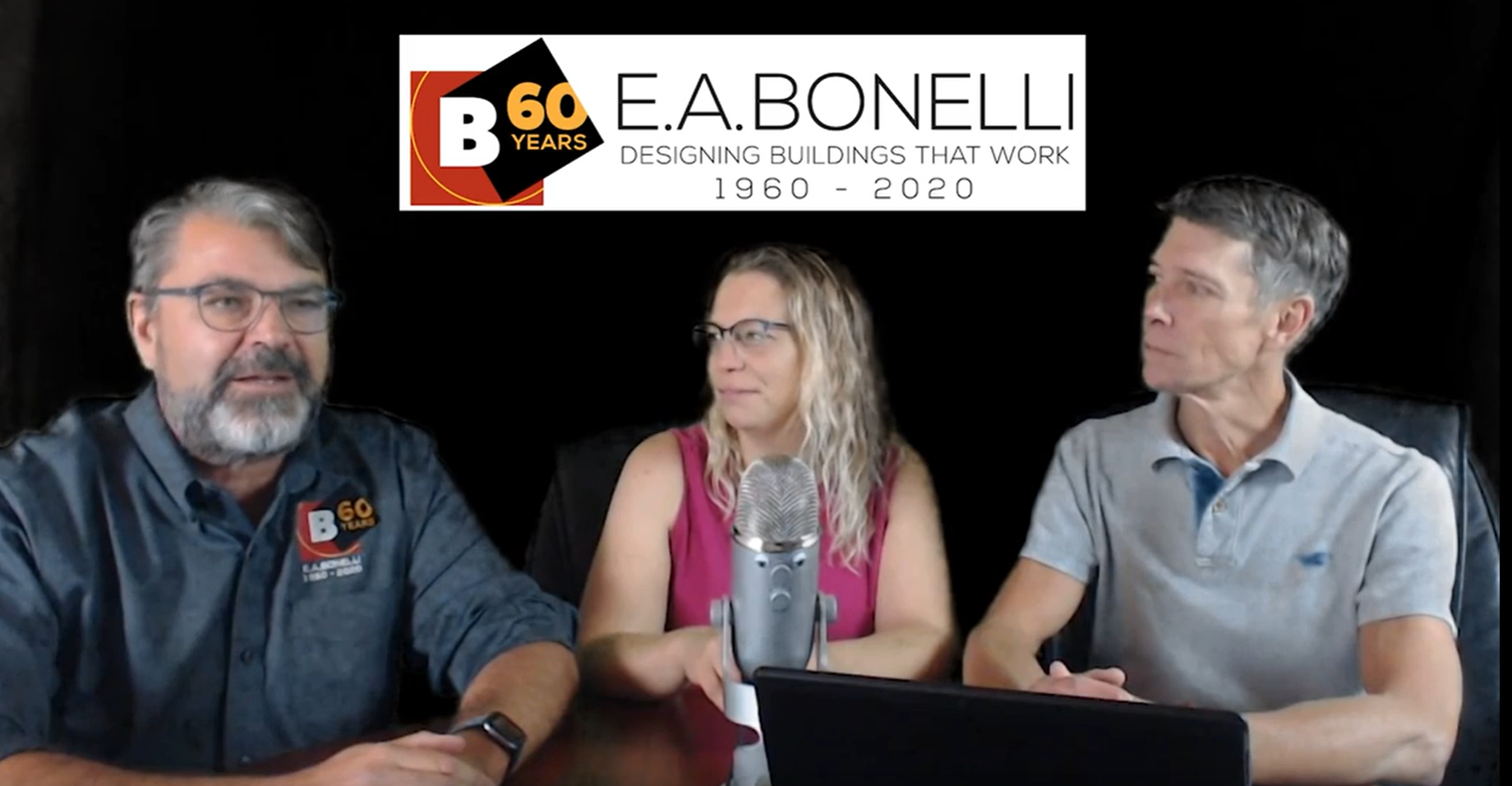
(l. to r.) Scott Savage, E.A. Bonelli CEO; Jessica Cristadoro, Vivid President & CEO; Steffen Weck, Food Business Consulting President & CEO
In addition to discussing how E.A. Bonelli is bringing its industry-leading hygienic facility design and site support services to the cannabis space, Scott, together with Jessica Cristadoro and Steffen Weck, will give attendees a first look at Vivid's planned Epicenter Facility. Join us for a virtual tour of the Denver-based facility being designed to take products from concept to commercialization to the dispensary shelves.
The video airs at 12:00 noon PST on July 30 as part of the CPX20 event.
This month we are happy to feature two of the newest and brightest young members of the E.A. Bonelli team. Just as our businesses have adapted to remote workspaces in the face of the pandemic, so too have colleges and universities modified their curricula with virtual classrooms and tools for distance learning.
Rebecca Savage, an architecture student at Montana State University; and Ally Cabling, an architecture student at Chabot Community College in Hayward, CA, share some insight as they trade in spring semester coursework for real-world work experience this summer.
For Rebecca, the most challenging adjustment came when her design studio class transitioned to a virtual experience towards the end of the semester.
Most of my classes were able to adapt very easily by delivering lectures either over WebEx or by pre-recording the material for students to watch on their own time. My architectural design studio had maybe the hardest time adapting both for students and professors. A usual class would consist of a lot of interactive one-on-one feedback and moving this to a virtual environment felt very unnatural. Instead of having a conversation with a large number of sketches and loose process work, we were now responsible for scanning our new work and formatting it every day to be shared virtually with the entire class. This resulted in a larger emphasis on quality of craft over quantity of ideas. While this was hard to adjust to, I think everyone was able to learn a lot with this new process.

Ally, likewise, faced some unique challenges when her studio class was forced to convert to distance learning. One design course, in its second consecutive semester, was in the middle of a group project designing a skyscraper. Project requirements were extended and amended. Ultimately, it fell to the students to re-imagine their presentation for a virtual delivery.
Throughout the project, my group spent most of our time communicating through text and meeting through Zoom while sharing our screens. With Zoom, it made transitioning to an online-reliant class easier, especially when it came to lectures and presentations. All of my lectures occurred over Zoom and although it felt strange at first to "attend" class from home, I soon adjusted to the norm. As an added bonus, I didn't have to drive all the way to school. Our design group modified our presentations to be available on file and to accommodate the Zoom share screen.
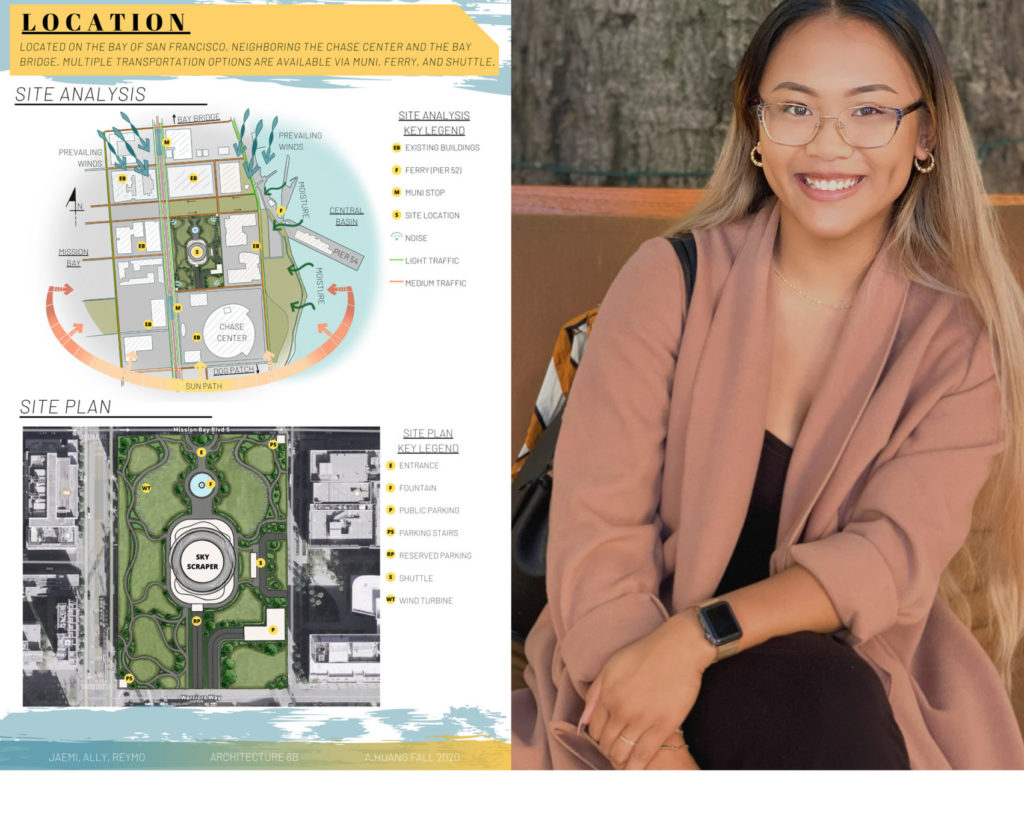 Ally, who works at our Oakland, CA, office when she's not in school, noted the similarities in how her classwork and projects at EAB transitioned in response to the pandemic.
Ally, who works at our Oakland, CA, office when she's not in school, noted the similarities in how her classwork and projects at EAB transitioned in response to the pandemic.
Both my classes and projects at EAB have been able to rearrange schedules in order to accommodate our availability. At EAB, we have the pleasure of working with clients who have a common response to what is happening and who understand what needs to be done to work through various Shelter In Place orders throughout the country. The working environment is remarkably similar to what we had been using in my classes: sharing files online, communicating via web conferences, and generally going paperless as much as possible.
In my few years of studying architecture, one of the main advances that I have seen among my classmates is working on an iPad or tablet for sketches, note-taking, research, and poster development for presentations. I used to use a lot of notebooks to take notes and to draw up designs, but now I have been using an iPad to replace all the paper that I would have used. There are many apps that I use that help with keeping notes organized, as well as Autodesk-supported apps for sketches and CAD file editing. Although not pocket friendly, they are definitely environmentally friendly. And, now that we have transitioned to learning and working remotely, these tools have never been more useful.
Rebecca, who is working for EAB from her home in Colorado, recognizes those same similarities between classwork and professional work.
In both cases everyone has been very supportive of their peers and co-workers, helping everyone transition when learning how to work virtually. All of my professors were very prompt when responding to emails and made virtual office hours very accessible to everybody. Similarly, working with EAB, I have noticed the same level of support and communication between co-workers. Platforms like Microsoft teams, used by EAB, and Brightspace D2L, used by my school, have worked very well in keeping open lines of communication and easily sharing documents and information with one another.
Aside from advances in various modeling software that are sure to continue to improve both for educational and professional use, this semester I have seen great advances in mobile scanning. Being able to send in scans of hand-drawn sketches was extremely necessary for my virtual learning this semester. Without access to large, expensive flatbed scanners, we were still able to produce hand-drawn plans and sketches and were able to send quality scans to professors just using a smartphone.
Initial interest in the field of architecture might be obvious by their last names (both have parents who are partners in the firm), but we wanted to dig a little deeper into their reason for choosing this educational path. Rebecca tells us that she has always enjoyed both math and art classes, and this seemed like a wonderful way of pairing those interests.
Spending time working with EAB has given me a deeper perspective into the inner workings of the field of architecture. I have had the opportunity to see, firsthand, every step of a project from the conceptual stages all the way through construction. In school, a large majority of our biggest projects are done individually and are focused on concept and creativity. While these are obviously very good skills to develop, being able to see how a professional team works during every step of a project gives invaluable practical insight into the entire field of architecture.
Beyond her family's connection to EAB, Ally shares how an interest in houseplants developed into her choice of major.
At the start of high school, I became fascinated by plants and fixer-upper television shows, so I started filling my house with all different types of plants. I learned about hardiness zones and started making various green DIY projects to decorate my room. This evolved into an interest in home and landscape design, which led me to consider architecture as a possible college major. Once I started working at the [Oakland] office over the summer of 2017, I became even more interested in the field. Being able to work at a firm at such a young age gave me a truly valuable experience and opened my eyes to the profession. I saw how everyone works collaboratively on projects and how different roles are assigned and interlaced. Working at EAB left me with a great impression of the field and eventually encouraged me to declare Architecture as my major.
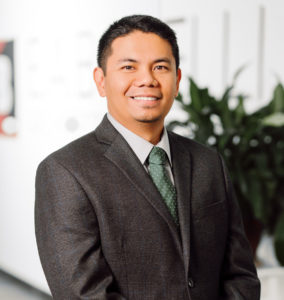 This month we are very proud to feature Joseph Laquian, P.E., S.E.
This month we are very proud to feature Joseph Laquian, P.E., S.E.
Joseph graduated from the University of Santo Tomas with a B.S. in Civil Engineering in 2003 and joined E.A. Bonelli in 2007.
In 2014, Mr. Laquian joined the ownership group of EAB and today, as Director of Structural Engineering, Joseph takes a lead role in guiding and mentoring our junior engineers while maintaining outstanding quality control over our entire structural engineering department.
We sat down with Joseph to learn more about his educational inspirations, career path, and enthusiasm for food & beverage facility design. We began by asking what inspired him to enter the field of structural engineering.
Prior to start of my freshman year in high school, the students were to attend the school orientation and discuss with the school counselor what they were most inclined to choose with regards to a profession in the future. They helped us pick a class, within field of study that we’re interested in taking for college. Each class is structured with courses that aligned with the general college course field that we are particularly interested in. I took the pre-engineering class, which focused in physics, chemistry, thermodynamics, drafting.
I have always had an affinity with math and science, so my tendency is focused on STEM-related course. My dad is an architect, and we have relatives working in construction as well. In some way, my father did have some influence in my chosen field. I could have easily been an architect, but I like crunching numbers more, so I went with the structural route.
You attended the University of Santo Tomas in Manila. Now that you have some perspective on the curricula and degree paths offered by colleges in the U.S., what do you think are the most interesting differences between studying engineering in the Philippines as opposed to the States?
I’ll start with the similarities first. The curricula in the University of Santo Tomas were primarily based on US standards such as UBC (previously), ACI, AISC, TMS, with the only difference in units used. The Philippines follows the international system of units (SI). The processes and methodology of design were the same.
Back home, there was emphasis in memorization of formulas, and knowing the references by heart. The US focuses more in understanding the theory and encouraging the students to grasp the concepts first. When examinations were administered [at my university], design references were not allowed. When I came here and took the EIT, PE, and SE exams, I was surprised to learn that we would have references for our use.
Since 1992, the month of May has been dedicated to acknowledging the history, cultural contributions, and achievements of Asian-Americans. Is this something that resonates with you?
Yes, it is great thing to know that there is a month dedicated for the acknowledgement of different people of many origins, especially from the Asia-Pacific region. They came to the U.S. seeking the American ideals of life, liberty and pursuit of happiness. And not only that, they also aimed to contribute and give back to the country, in the fields of science, arts, healthcare, commerce, and so on. Being a first-generation transplant, I’m grateful for the opportunities available.
What can you share about one of the most interesting (or earliest) projects that you worked on?
I remember working a lot on tenant improvements or equipment additions in the General Mills plant in Lodi, CA. There have been continuous improvements and additions and modifications over the years in the plant, so the as-built drawings can only provide information up to a certain point. You really needed to go to site to gather data.
During my early years in EAB, the constant field work and surveying that I performed together with Howard Tom was formative and educational for me. I got to experience firsthand the issues that needed to be taken into account with the design: factoring scheduling issues, plant shutdowns, learning about process flows, and numerous other items that I would not normally learn in school and likely, at any other firm. At the end of the day, I learned new things, appreciated how things are built, and would come home smelling like Cheerios.

You have taken on the role of mentoring and guiding junior engineers at the firm. What is something that you think all emerging professionals and recent graduates in the engineering fields should know as they are starting out on their careers?
Have a critical thinking mindset. Keep learning. Stay curious.
One of my favorite quotes, by Jack Welch, the former CEO of General Electric, is: "Before you are a leader, success is all about growing yourself. When you become a leader, success is all about growing others."
Lastly, we're all spending a lot of time working from home these days as we navigate the current pandemic situation. What's your favorite go-to recipe for the family?
It would have to be Filipino Chicken Adobo. Classic comfort food.
INGREDIENTS
· 1/4 cup soy sauce (65 ml)
· 1/2 cup white Filipino cane vinegar, or distilled white vinegar (125 ml)
· 6-8 cloves garlic, smashed with the side of a knife and peeled
· 1 teaspoon whole black peppercorns
· 2 bay leaves
· 6 skin-on bone-in chicken thighsINSTRUCTIONS
1. Place the soy sauce, vinegar, garlic, black peppercorns, and bay leaves in a large, nonreactive sauté pan, and then nestle the chicken thighs, skin side down, into the pan. Bring the liquid to a boil over high heat, and then cover and simmer over low heat for 20 minutes. Turn the chicken over, and then cover and simmer for another 10 minutes.2. Uncover the pan, and then increase the heat to high and return the sauce to a boil. While occasionally turning and basting the chicken, continue boiling the sauce, uncovered, until it is reduced by half and thickens slightly, 5–7 minutes. Serve with steamed white rice.
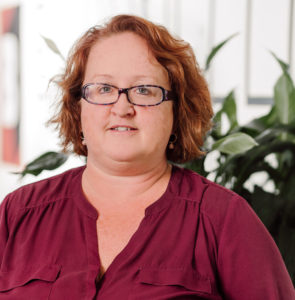 This month we are very proud to feature Lesley S. Marshall, P.E.
This month we are very proud to feature Lesley S. Marshall, P.E.
Lesley graduated from Cal Poly San Luis Obispo with a B.S. in Architectural Engineering in 1992 and joined E.A. Bonelli in 1993.
She became a project manager in 1996 and, as our longest-tenured PM, continues to ensure project success with proactive problem-solving skills and a hands-on approach that runs from preliminary meetings through construction site visits.
In 2014, Lesley joined the ownership group of EAB and, as our V.P. of Structural Engineering, she has been instrumental in guiding the next generation of EAB engineers through their professional growth and development.
We sat down with Lesley to learn more about her educational inspirations, career path, and enthusiasm for food & beverage facility design.
As a high school sophomore I took a drafting elective on a whim. It ended up being, quite possibly, the most significant class that I took in high school. The teacher, Mr. Hansen, is one of the only teachers that I still remember to this day. He was so energetic and very vocal about how he thought Cal Poly was the best school around, and how we could take these drafting classes and learn how to draw and design buildings. I never imagined that I would be interested in Structural Engineering, but Mr. Hansen made it sound so exciting that I took the leap and never looked back.
You chose a very male-dominated field, Lesley. What was that like, initially, and what are your feelings about that today?
It never really crossed my mind about working in a male-dominated field when I was entering school, until I started my coursework and realized I was one of just a handful of women in almost all my classes. Other than it being a little odd or different, it didn’t bother me back then and it certainly doesn’t bother me now.
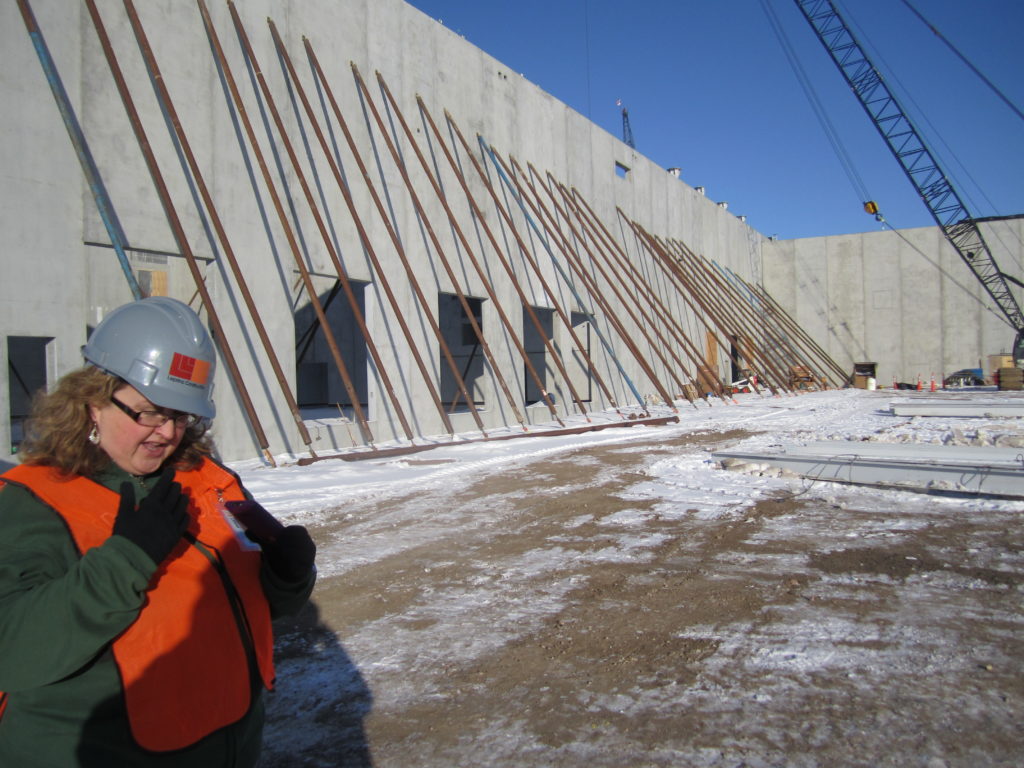
Lesley at a jobsite in Colorado in 2011
What do you remember about the first project that you managed?
The first time I managed a project was in 1996 when I took charge of the structural portion of the Columbia River Processing project for Tillamook Cheese. This was in Boardman, along the Columbia River in Oregon. I loved being able to coordinate with other disciplines. It was my first job where I would travel to the jobsite and make contact with the Contractors, as well as the other engineers. It gave me invaluable insight as to what happens once the drawings are complete.
At E.A. Bonelli, all we do is facility design for the food & beverage industries. What is it about this focus that excites you?
As Architects and Engineers, I love that food and beverage facility design incorporates both aspects of architecture and engineering. Not only are we responsible for designing a “Building that Works," but we are always designing for the hygienic nature of the building as well. Even from a structural perspective, this trains our thinking towards materials that are often quite different from other buildings or projects.
You've worked on so many different cheese-making facilities in your almost three decades at EAB. But do you have a favorite cheese?
There are so many different cheeses on the market, but good ol’ Cheddar is my favorite style of cheese by far. Particularly aged white sharp cheddar. A good grilled cheese sandwich with aged white cheddar is the best!

On February 8, 2020, E.A. Bonelli + Associates, Inc. formally recognized sixty years in business, unveiling an anniversary logo and commemorating the occasion with a party in downtown San Francisco, blocks away from where it all began.
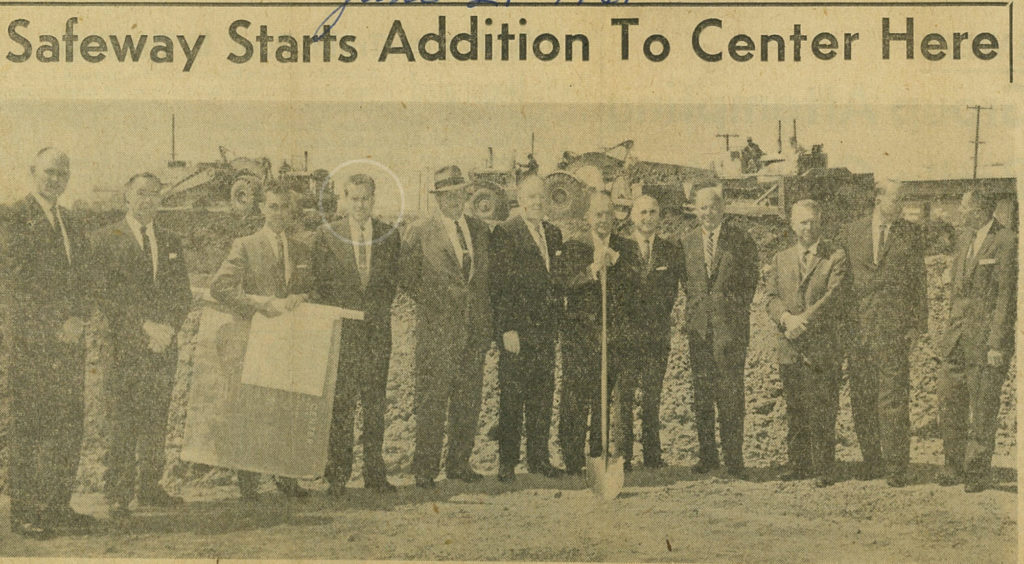
Ed, fourth from the left, at a Safeway groundbreaking in June, 1961
After graduating with an architectural degree from UC Berkeley in 1953, Ed Bonelli went to work in the engineering department of Ky Thiel, an industrial building materials supplier that specialized in steel and galvanization. In the late 1950's a decision was made to split the business, and Ed was given the opportunity to run his own architectural firm, specializing in the kind of industrial buildings that he had been working on for the last six years.
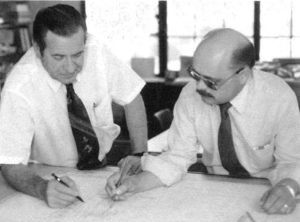 The E.A. Bonelli firm, which at the time was Bonelli & Wong, began operating from an office on the 500 block of Market Street in San Francisco in 1960. The office soon moved to a location at 2nd and Minna, where they remained until 1972. At that time, the firm moved to the sixth floor of a building at Howard and New Montgomery and officially became E.A. Bonelli + Associates. After two decades at a fourth San Francisco location, this time at Brannan and 9th, the new ownership group moved the growing business to its current headquarters in Oakland, CA.
The E.A. Bonelli firm, which at the time was Bonelli & Wong, began operating from an office on the 500 block of Market Street in San Francisco in 1960. The office soon moved to a location at 2nd and Minna, where they remained until 1972. At that time, the firm moved to the sixth floor of a building at Howard and New Montgomery and officially became E.A. Bonelli + Associates. After two decades at a fourth San Francisco location, this time at Brannan and 9th, the new ownership group moved the growing business to its current headquarters in Oakland, CA.
Ed Bonelli's focus on food processing and cold storage was a guiding principle since the very beginning. In the 1970's Ed worked with Dow Chemical on some of the very first insulated metal panels, used at Safeway distribution centers in California. The company's first significant growth occurred during this period, when similar retailers turned towards in-house food and beverage production and distribution.
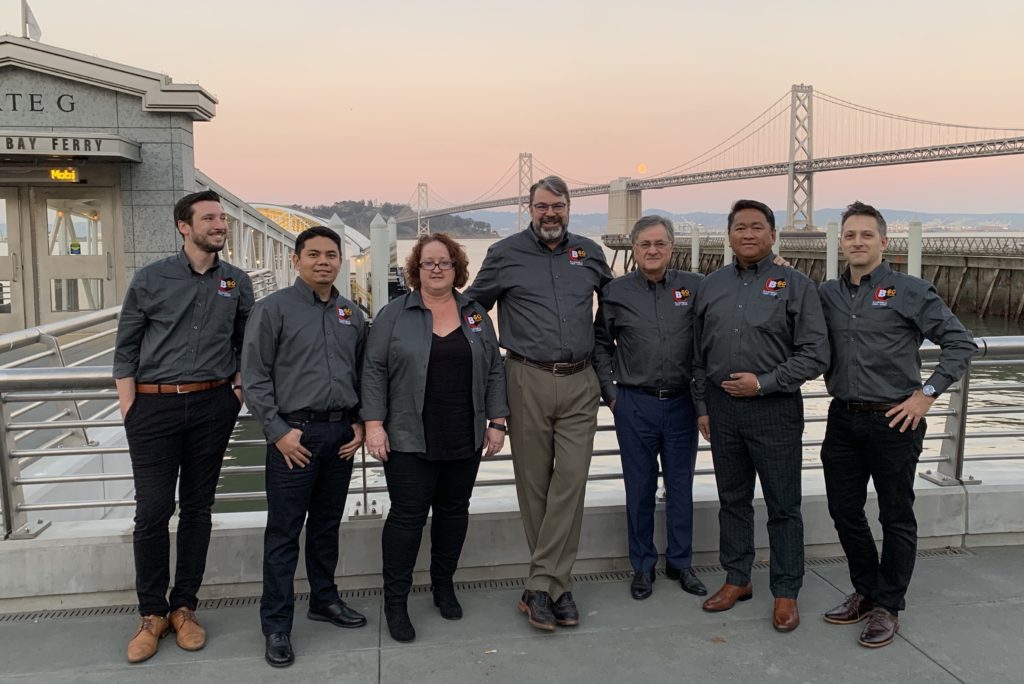
The managing partners of E.A. Bonelli, Inc., February, 2020
In the 1990's E.A. Bonelli + Associates, Inc. positioned itself once again on the cutting edge of industry trends by working on an influx of dryer projects for whey powder and infant formula production. Through 2020, the firm is proud to have worked on the design of almost sixty dryer towers throughout North America.
The ensuing decades have seen the firm's portfolio grow to include an ever-growing range of facilities including artisan food production and AgTech startups. Even as E.A. Bonelli has continued to grow, however, its focus remains firmly rooted in the vision of its founder: client-focused, hygienic design for the food & beverage industries.
The new logo, recognizing the anniversary milestone, has been formally adopted by the firm for business deliverables and correspondence for the remainder of the 2020 year.
What defines project success? EAB president Marco Di Gino, collaborating with EAB associate Brad Chicoine for the 2014 Annual Meeting of 3-A Sanitary Standards, Inc. in Milwaukee, shared some insight:
In the construction business, the standard measures of success for a project are whether a job is completed on time, and on budget. That doesn’t seem like enough of a definition. It is also fairly unrealistic. We are building a plant to manufacture, produce, or distribute a product. In our case, a product for the food and beverage industry. So when I think of a successful project, I want to know that: the plant is performing as intended; the product is selling well; and the client is making money. A realistic measure of success, for me, might not come until months or years later, when I get a phone call from the client and hear the words, “we need to expand,” or “we need to build another facility…” Obviously, however, I’m a little biased."
This past spring, Brad presented "Keys to a Successful Project" at the Annual Meeting and, before addressing the design challenges of balancing optimum layout efficiency with optimum hygiene considerations, he discussed the importance of choosing the right delivery method for a client's project.
There is no "best" delivery method, explains Brad. Having worked on projects constructed using the traditional Design-Bid-Build process, Design-Build partnerships, and Design-Negotiate-Build systems, Brad has seen, first-hand, how different types of projects for different clients benefit from each of these delivery methods.
"Starting with the best delivery method is an invaluable first step," he says. "It is as important a consideration as decisions on budget and construction."
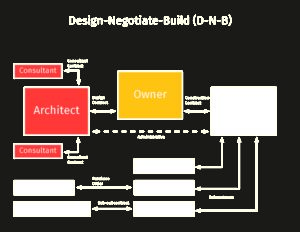 On a recent project, for example, a Design-Negotiate-Build delivery was best suited to the client's desire to choose a contractor based on experience and expertise in a very specialized area of construction. The relationship created an early collaboration among the client, EAB, and the contractor, that kept the project on schedule without sacrificing owner control over several key design decisions. Quality and time were of paramount importance, and both were achieved to the client's satisfaction thanks in no small part to an early adoption of the D-N-B method.
On a recent project, for example, a Design-Negotiate-Build delivery was best suited to the client's desire to choose a contractor based on experience and expertise in a very specialized area of construction. The relationship created an early collaboration among the client, EAB, and the contractor, that kept the project on schedule without sacrificing owner control over several key design decisions. Quality and time were of paramount importance, and both were achieved to the client's satisfaction thanks in no small part to an early adoption of the D-N-B method.
With more than five decades of experience designing facilities in the food and beverage industry, EAB has been a part of every delivery method imaginable, and has seen trends within the construction industry adapt to an ever-increasing amount of processing innovation and expansion. There are advantages and disadvantages to every method, but understanding the client's goals and weighing options at a project's onset allows for the best possible outcome.
